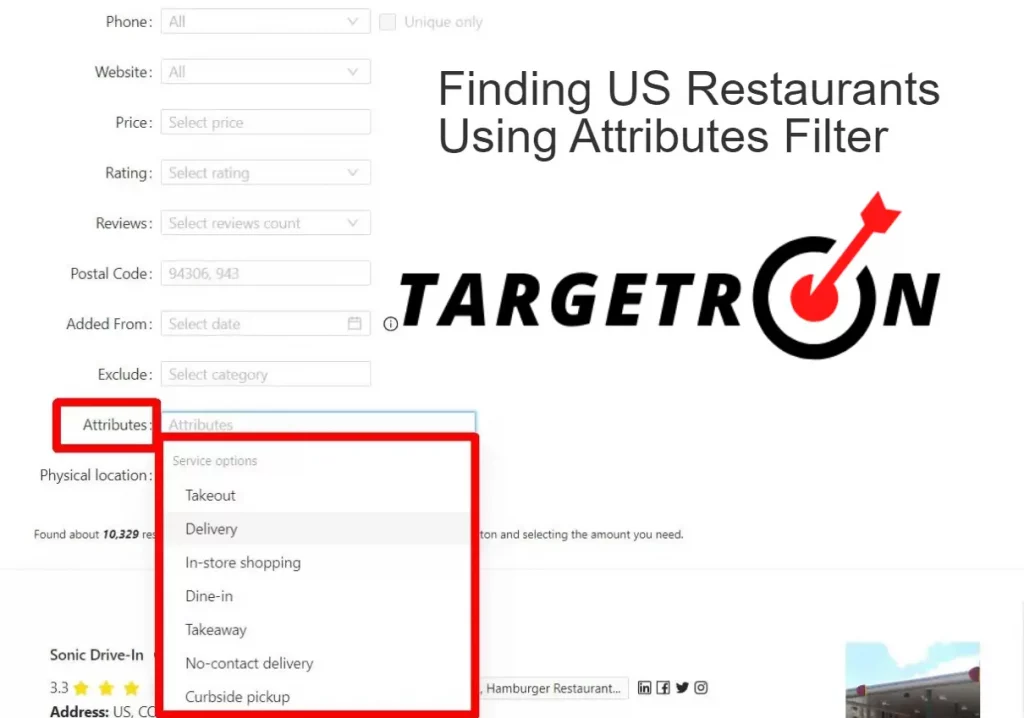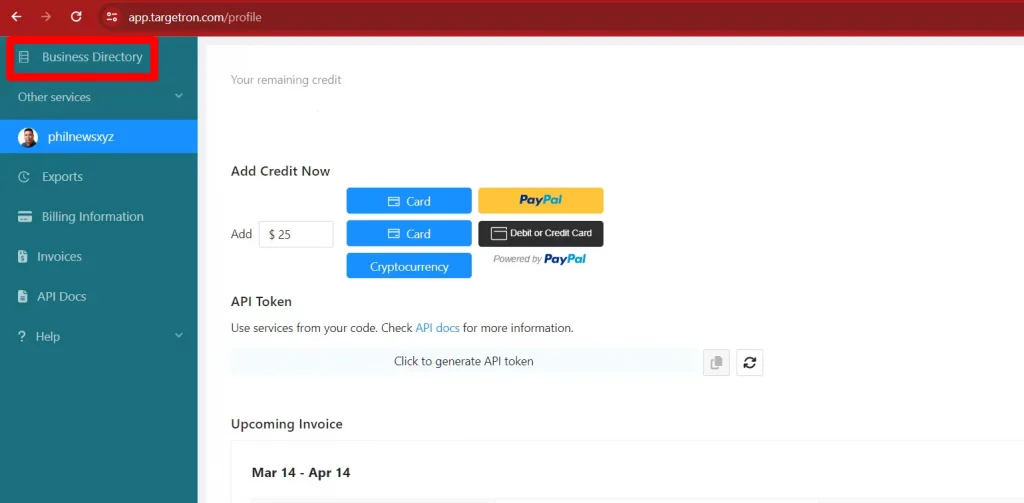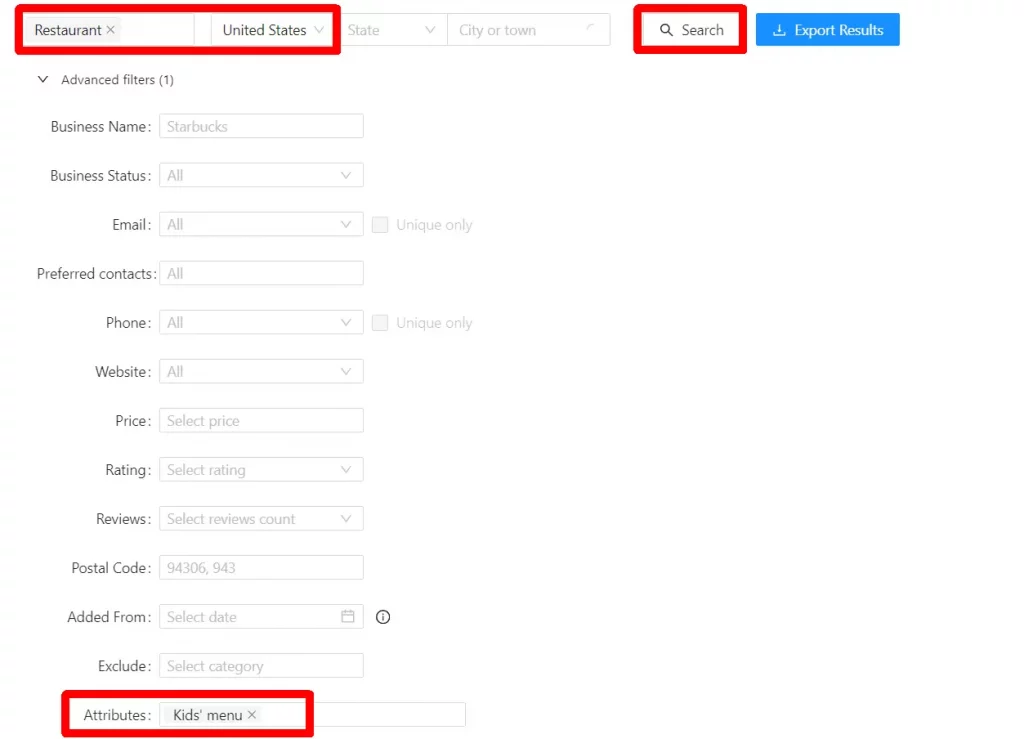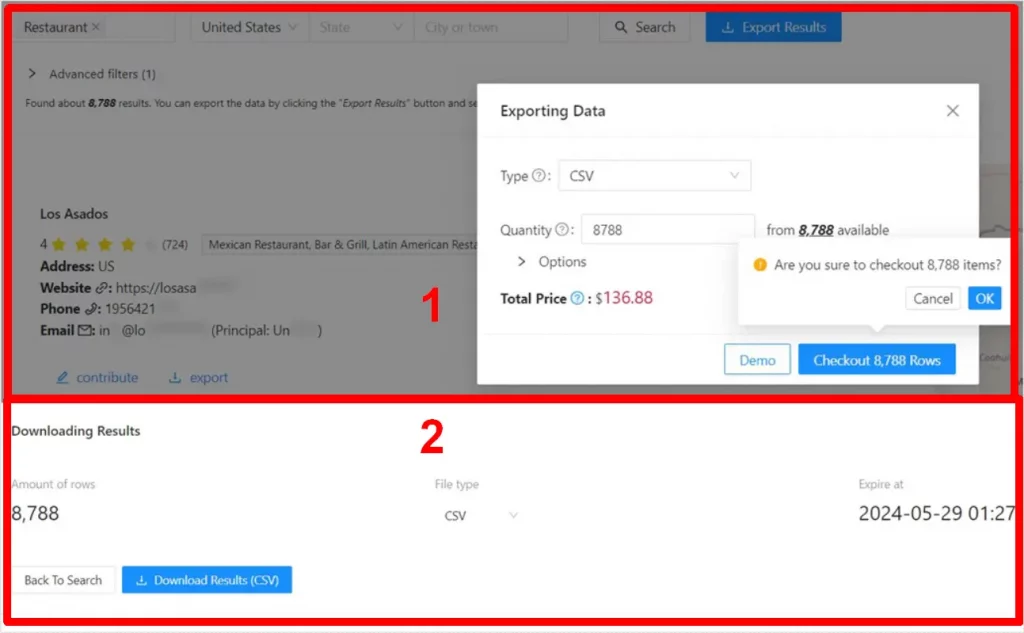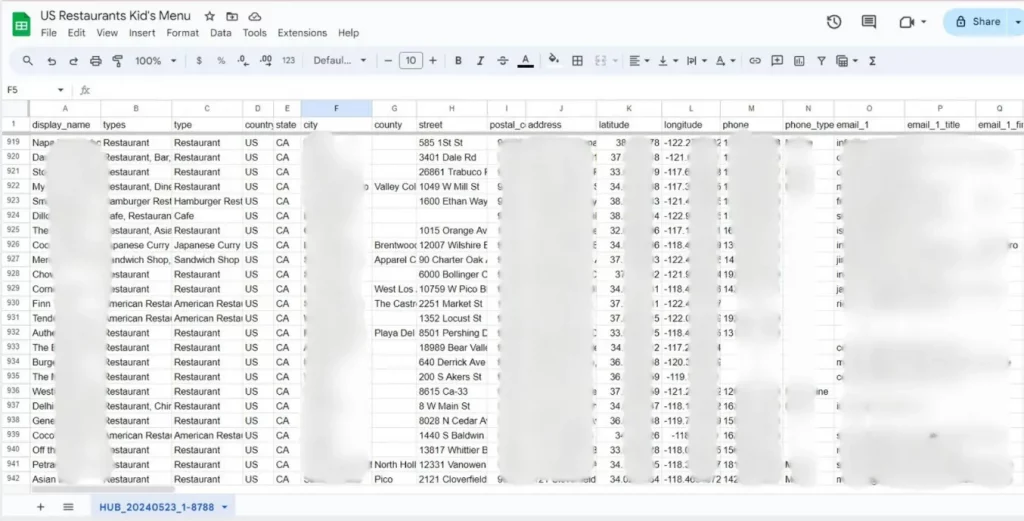Using Targetron's Attributes Filters Searchin for Restaurants Offering Kid's Menu
Table of Contents
Introduction to Attributes Filters
Finding specific restaurants in the United States can be challenging if you do it the usual way, searching the internet individually. However, utilizing a B2B business directory like Targetron could save you time. Targetron’s business directory is also exceptional with its advanced filters option. This article will provide a comprehensive guide on using attribute filters to find specific restaurants in the United States.
With Targetron’s Advanced Filters options, you can now use an Attribute filter to find specific restaurants in the United States. We will demonstrate the practical applications and benefits of using attribute filters, one of the features of the Advanced Filters option on the Targetron platform.
Attributes have different meanings depending on their particular use. They are characteristics or qualities that define or describe an entity, person, object, or phenomenon. In our daily lives, an example of attributes are colors, size, and shapes, as they are attributes of a physical object. In object-oriented programming, an attribute (a property) is a data variable or characteristics associated with a class or object.
In database management, an attribute is a table column representing a data field that stores information about records or rows. For example, EmployeeID, FirstName, and LastName are attributes in a table named Employees.
Understanding Attributes in B2B Directories
Attributes filters are tools for refining and narrowing search results based on specific characteristics or attributes. They help users find relevant information quickly by specifying criteria that the data must meet.
Attributes in Business-to-Business (B2B) directories are specific information or characteristics about businesses listed in the directory. They help users filter and search for businesses that meet their specific needs and enhance the directory’s searchability, filtering, and overall usefulness.
Most Common Attributes in B2B Business Directories
- Business Name
- Industry Type
- Location
- Contact Information
- Website URL
- Business Description
- Size of Business
- Operating Hours
- Customer Reviews and Ratings
- Key Contacts
- Social Media Links
- Products and Services
Importance of Attributes in B2B Directories
- Personalization: Help personalize the user experience, allowing us to find businesses that closely match specific needs.
- Enhanced Searchability: Attributes make searching and finding businesses with specific criteria easier for users.
- Improved Filtering: Narrow search results to the most relevant companies.
- Better Decision Making: Detailed attributes provide users with the information they need to make informed decisions.
How Attributes Filters Work
- Data Input: Users select desired attributes through a user interface.
- Database Query: The system queries the database to filter out entries that don’t match the criteria.
- Sorting Results: Relevant entries are sorted by additional criteria like ratings or distance.
- Displaying Results: The sorted and filtered results are displayed to the user, often with detailed information.
Demonstration on How to Use Advanced Filters Using Targetron’s B2B Directory
Step-by-Step Guide to Using Targetron’s Attributes Filters
- Access Targetron by logging in to your account to access the Business Directory portal.
- Select Restaurant as the Business Category, followed by Country, State, City, or Town. We will select the entire United States for our restaurant query in this example. Once you directly click the Search option, you will see more than 515,722 results.
- Select Advanced Filters, and a drop-down menu will appear featuring some of the most common filters used, such as Business Name, Status, Email, Preferred contacts, Phone, Website, Price, Rating, Reviews, Postal Code, Added From, Exclude, Attributes, and Physical Location.
- Choosing Attributes and selecting specific attributes such as Service options, popularity, Offerings, Atmosphere, Restaurant highlights, Accessibility, Form of payment, Amenities, Health and safety measures, Dining options, Crowds, and Children’s needs. For this example, we will choose Restaurants Offering a Kid’s Menu.
- The next steps are to confirm the search results and export the data, but before that, you are reminded to review your search options before exporting. In this step, you can select the type of files you want to download: CSV, XLSX, JSON, or PARQUET. The estimated total expenses will also be displayed.
- We are downloading and analyzing our restaurant industry search results using attributes. We are specifically searching for restaurants offering kid’s menus. The results showcase restaurant names with their websites, emails, locations, and other important data.
Conclusion
Targetron offers various filters to narrow down your search for specific restaurants. You can use their Advanced Filters options and particular attributes related to the restaurant business. One of the most effective search methods using Targetron is combining filters to narrow down the most relevant results.
We also encourage you to check the Restaurant listings for updates as new businesses open and existing ones change. With Targetron, we will keep them updated so you can grow your business. Using Targetron’s attribute filters can significantly streamline the process of finding specific restaurants that meet your criteria.
By leveraging these filters, you can pinpoint the dining experience you’re looking for, whether based on cuisine, location, ratings, or special features like restaurants that offer kid’s menus.
FAQ
Most frequent questions and answers
1. Go to the Targetron Platform.
2. Select categories and locations.
3. Click search, and export to get the data.
A lead database is a list of business contacts within a particular niche, category, or industry. It contains emails, phone numbers, and other marketing information.
A sales lead database is a list of business emails and phone numbers that sales can use for cold outreach.
